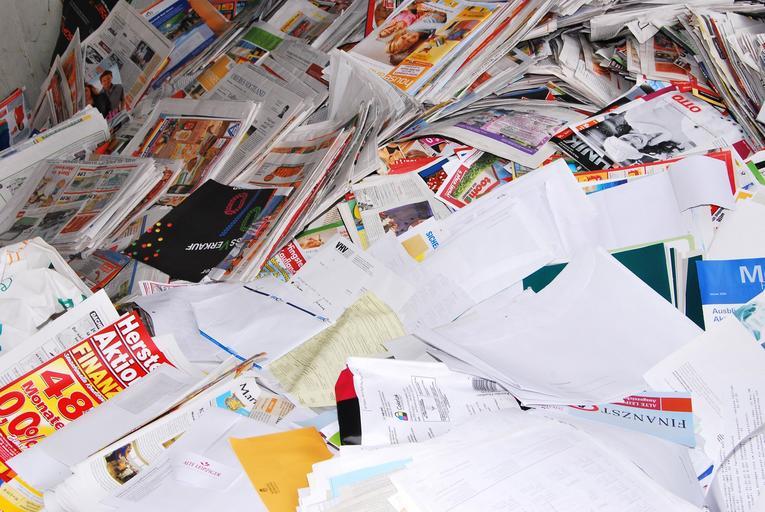Step 1
Carefully bend a metal coat hanger into a square and pull a leg of a pair tights over the hanger to make a screen.
Step 2
Cover a tray with several layers of newspaper and two layers of kitchen towels above this.
Step 3
Use your hands to tear the newspaper into small pieces and put them in a bowl. Make sure you have about 4 cupfuls of shredded paper.
Step 4
Add water until all the paper in the bowl is covered and leave to soak for an hour.
Step 5
Add a tablespoon of PVA glue to the paper and water, then mix with your hands to make a pulp.
Step 6
Add cotton wool, food colouring and/ glitter as desired and mix well.
Step 7
Put the screen on the covered tray and spoon the pulp onto the screen, spreading it out into a thin layer.
Step 8
Put a plastic bag on the pulp and use a rolling pin to even out the mixture and squeeze out the water.
Step 9
Take off the plastic bag and lift the screen from the tray and place it on the piles of dry newspaper and kitchen paper.
Step 10
Leave the pulp to dry for three days and carefully peel it off the screen.
Instead of using food colouring a water-based spray can be used to colour the paper.
An empty photo frame can be used rather than a coat hanger.
Instead of a plastic bag you can use cling film.
Take care when using the glue as it can be toxic on inhalation/ingestion
Imagine you have 3 groups of 3 kids. Each member of a group has their hand tied to another member of their group using rope, so there are 3, 3 person chains. These 3 person chains are our polymers and the ropes represent the intermolecular bonds present between the monomers (each kid). Now imagine that the person at each end of the chain holds hands with the person at the end of a different chain. This represents intramolecular bonds, showing the formation of fibres.
Now try and separate the chains, it is easier to separate the hand holding chains than the tied chains. This shows the different strengths of the bonds. Intermolecular bonds are generally stronger than intramolecular bonds. Thus when a piece of paper is cut it is the intramolecular bonds that are broken. However, this also indicates that intramolecular bonds are easier to form. Upon addition of water intramolecular bonds, in this case hydrogen bonds, reform between the fibres once again recreating paper from the scraps.
Why do we need to use the tights?
This acts as a screen so excess water can be removed easily.
Why do we soak the papers in water?
To weaken the bonds between paper fibres
Why does paper strengthen when drying?
The bonds between fibers are being reformed
Why do we cut the paper into smaller pieces?
To help break apart the fibres and increase the surface area across which any reactions may occur
Why do we mix in cotton wool?
The cotton makes the paper stronger.
Paper is made from wood and thus is composed of fibres of cellulose. All trees and green plants possess this cellulose within their stems and it is this that gives the paper it’s appearance and texture. Small, narrow fibres produce smooth, thin paper while larger fibres produce thicker paper. It is because of the large size of such fibres that, for some types of paper, such as cardboard, the fibres are visible with the naked eye.
Cellulose can easily form both intramolecular bonds with itself and other molecules. It is due to this that the fibres within paper remain in place. When the paper is cut these bonds between fibres are broken, however in the presence of polar groups (molecules that have positive and negative charged regions) intermolecular forces once again form thus recreating the paper from thorn scraps.
http://indianapublicmedia.org/amomentofscience/chemical-cellulose-paper/
https://eic.rsc.org/feature/paper-conservation/2020204.article
Cellulose is produced by plants, through the linkage of simples glucose monomers to produce long polymer chains. The cellulose chains possess a large number of -OH side groups which, due to their great difference in electronegativities, are relatively polar and can therefore attract other polar groups. This attraction leads to the formation of intramolecular bonds, the strongest of which are hydrogen bonds. Hydrogen bonding occurs when a hydrogen atom is covalently bound to an atom of high electronegativity, such nitrogen or oxygen which experience an electrostatic field of another highly electronegative atom. It is due to these bonds that the polymer chains can become linked and, through the process of polymerization, form fibres. The intramolecular bonds present also influence the final characteristics of the compound produced.
The cellulose required in paper production is extracted from plant sources and suspended within water baths. Due to the polarity of water, the intermolecular forces get interrupted and cellulose fibres separate. Using a mesh of appropriate pore size, paper scraps can be rejoined and a mat of interwoven cellulose can be formed as the water is drained out. The remaining water is then removed through drying and pressing which further encourages hydrogen bonding between the fibres into the newly formed sheets of paper.
Applications
With mankind becoming acutely aware that the earth’s resources are severely limited, recycling has proven an efficient method of reducing waste. Paper products that are capable of being widely recycled.
http://www.bbc.co.uk/schools/gcsebitesize/science/edexcel_pre_2011/oneearth/damagetotheenvironmentrev4.shtml
Research
Use of paper in this technological age has proven to still be essential. Research has developed paper that upon being written on, automatically sends its contents to a designated software program.
http://erinlyyc.com/2016/09/10/write-paper-see-phone-tv-instantly-moleskine-smart-writing-set/
- Instead of newspaper try different paper types like printing paper, magazine paper and paper towels.
- Instead of paper use pieces of plastic.



